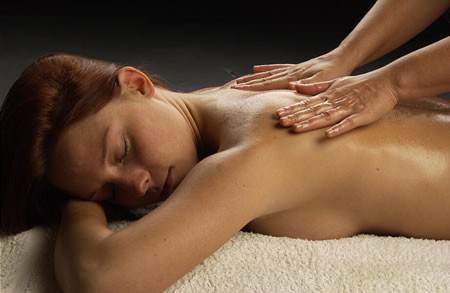Like the commonly known ailments, there are several treatments for repetitive stress injury. Below are some options that you can choose from to treat your strained muscle.
1. Rest
Stop whatever you are doing that caused your condition. Of course it is impossible to stop working, so the best thing to do is take some break from your tasks. Relax for a bit. If you can’t do it while at work, then visit a massage therapist once in a while.

Massage has long been known as a therapeutic technique that manipulates the soft tissues of the body. It provides calming effects by relaxing the muscles through ways of kneading, stroking and pressing points of the body to relieve pain, decrease stress, tension and to relax and help tone the muscles.
Other benefits you can get from massage therapies include improvement in your breathing leading to better oxygenation thus decreasing your chance of developing carpal tunnel syndrome. It also improves blood circulation, alleviate the pain and stiffness of an over stressed muscle leading to giving you an improve sense of well-being.
2. Pain killers
Your muscles have been tensed, they get painful, and they get inflamed. Solution for inflamed muscles when it comes to pharmacology would be a pain killer under the category of NSAID or non-steroidal anti inflammatory drug. A great example of such is aspirin and ibuprofen.
Note though that this is just a temporary option for fast relief of pain and should not be taken as a maintenance drug. Too much use of these medications can lead to stomach ulceration and eventually stomach bleeding and Reye’s Syndrome, a deadly condition where the organs are affected specially the liver and brain from abusive use of over the counter medications such as aspirin.
3. Compress
Tense muscles are relaxed by application of heat or cold compresses. Both compresses are helpful in alleviating the pain sensation of the injured muscle.
- HOT COMPRESS – It is mainly used to decrease the sensation of pain of an injured muscle that isn’t inflamed yet. It is also indicated to relax over used muscles that had already tightened from stress. It dilates the blood vessels which then can transport more oxygen to the muscles increasing its elasticity thereby decreasing pain. DO NOT use hot compress when the injury is already inflamed. The five cardinal signs of inflammation are calor, rubor, dolor, tumor, and loss of function. Calor or heat (only applicable on human extremities), rubor or redness, dolor or pain, tumor or swelling and loss of function (function laesa). Also take into precautions those have cases like diabetes, open wound or PVD (peripheral vascular disease).
- COLD COMPRESS – It is used to decrease inflammation or swelling of an acute injury. Cold compresses constrict the blood vessels that results in reduction of pain and inflammation. DO NOT use a cold compress application before starting an activity for as mentioned above, it constricts blood vessels, decreasing the blood flow on the certain area it has been applied to resulting to decrease in oxygen supply which then will further lead to a more complicated case known as Reynaud’s Phenomenon (where the hands and toes, nose and ears feel numb cause of temperature changes and having a low oxygen supply due to constricted blood vessels) and hypersensitivity to cold.
4. Splint
Use a splint mostly at night to avoid further movement and injury of the hand area.
5. Seek professional advice
It is always best to ask for a professional medical practitioner of the best therapies for your condition. A general practitioner can prescribe you to undergo certain activities that include:
Physical Therapies:
- massage treatments
- phonophoresis – is done through the use of ultrasound to help in enhanced absorption of topical analgesics or anti-inflammatory drugs to decrease pain.
- exercises/stretches
Occupational Therapies:
- biofeedback- where you learn how to control bodily functions with the use of your mind with the help of electrical sensors that measures and gives information (feedback) about your body (bio/life).
- seminars and trainings on proper keyboard typing and mouse use
Steroid injections / Cortisone shots:
Only when it is recommended to when an area is in definite condition of being inflamed such as seen on tenosynovitis or carpal tunnel syndrome.
Alternative treatments for repetitive stress injury conditions
1. Nutrition and adequate hydration
Eat right and drink at least 8-10 glasses of water in a day.
2. Exercise
Move and stretch once in a while for at least 30 minutes a day. Yoga and tai chi are great options of exercises. Yoga and tai chi helps in uniting your mind and body as you meditate, decreasing stress levels by increasing your oxygen level through proper breathing techniques.
3. Massage therapy
Massage helps in better blood circulation and relaxation of tense muscles.
4. Alexander technique
Alexander technique is a skillful use of self. It helps in controlling things in out life such as staying still, our breathing, how we learn things, how we organize our awareness and how we deal better in unexpectedly demanding situations.
Because of the difficulties that often are diagnosed with repetitive stress injury, you may find yourself visiting several doctors for appointments. For this reason, it is important to begin the treatment process as soon as possible. Otherwise, repetitive stress injury may worsen over time if you do not take preventive measures or treatment programs.


 (7 votes, average: 4.43 out of 5)
(7 votes, average: 4.43 out of 5)









